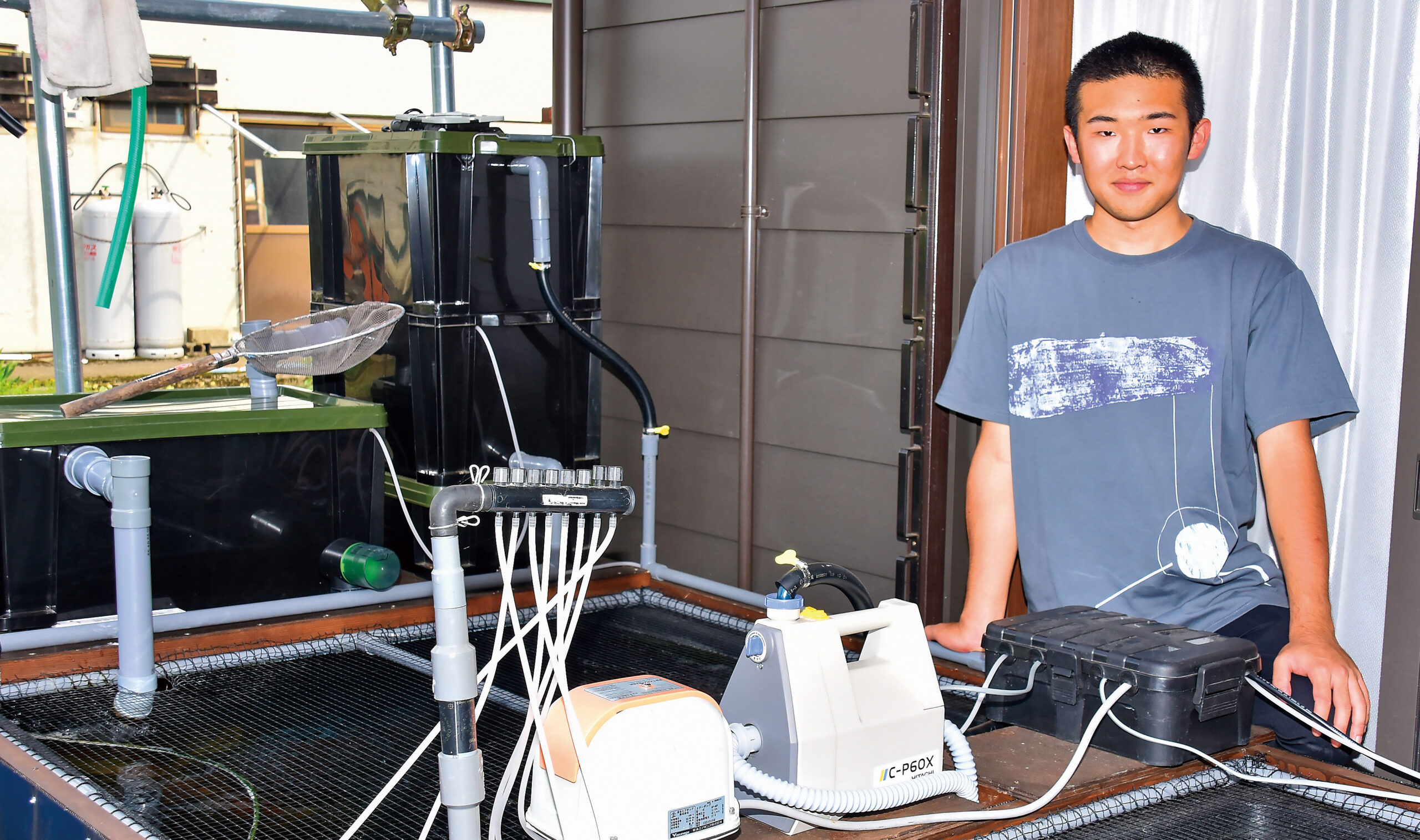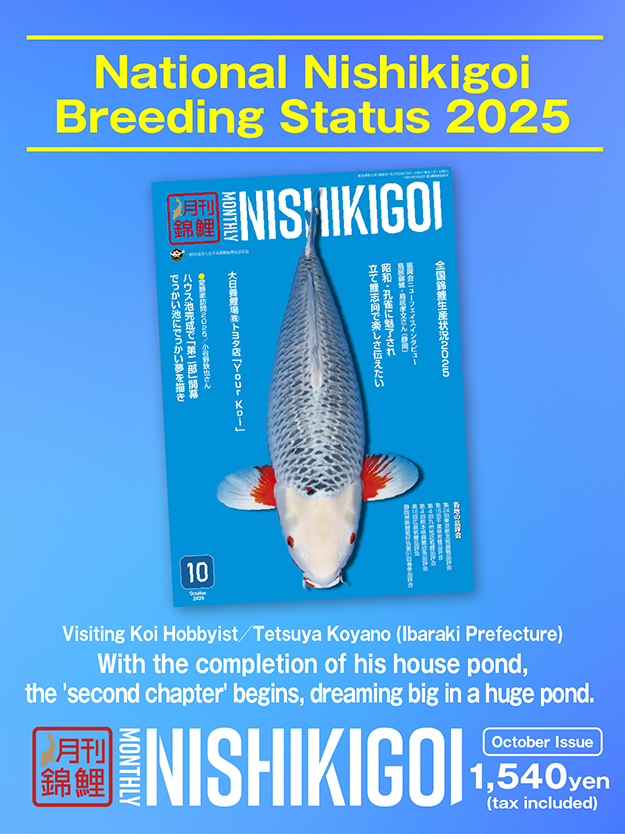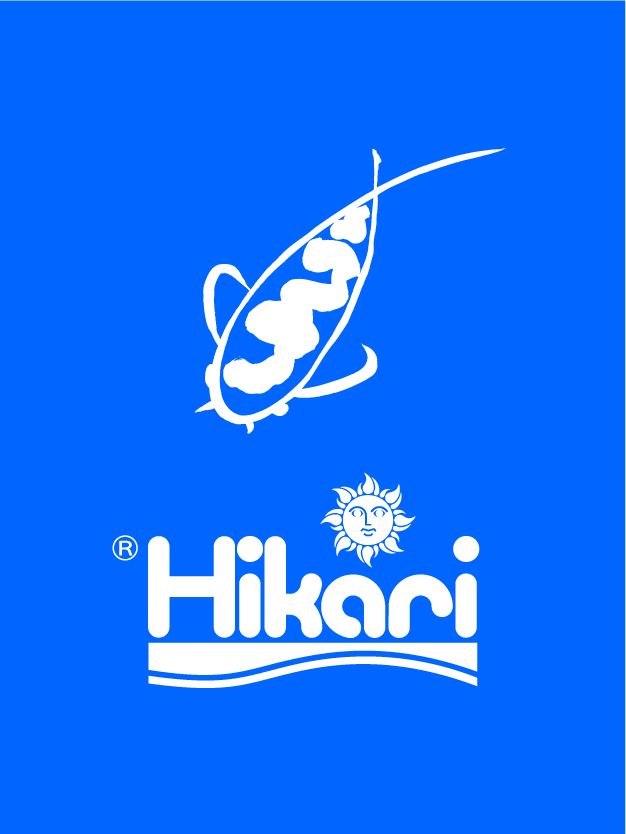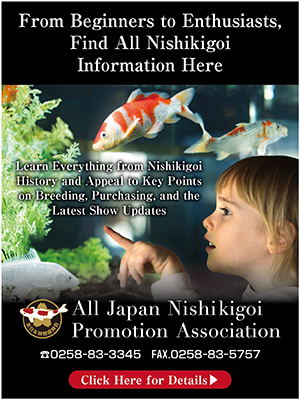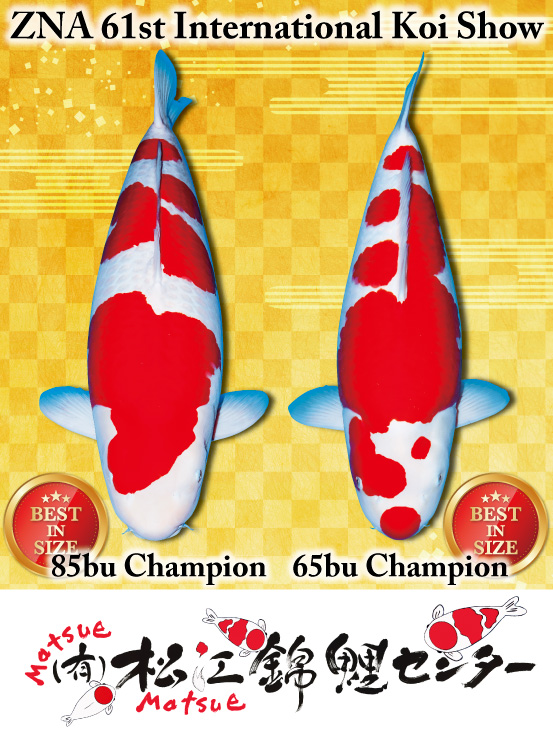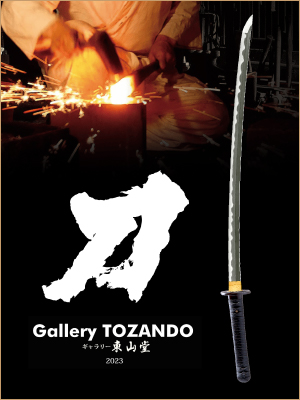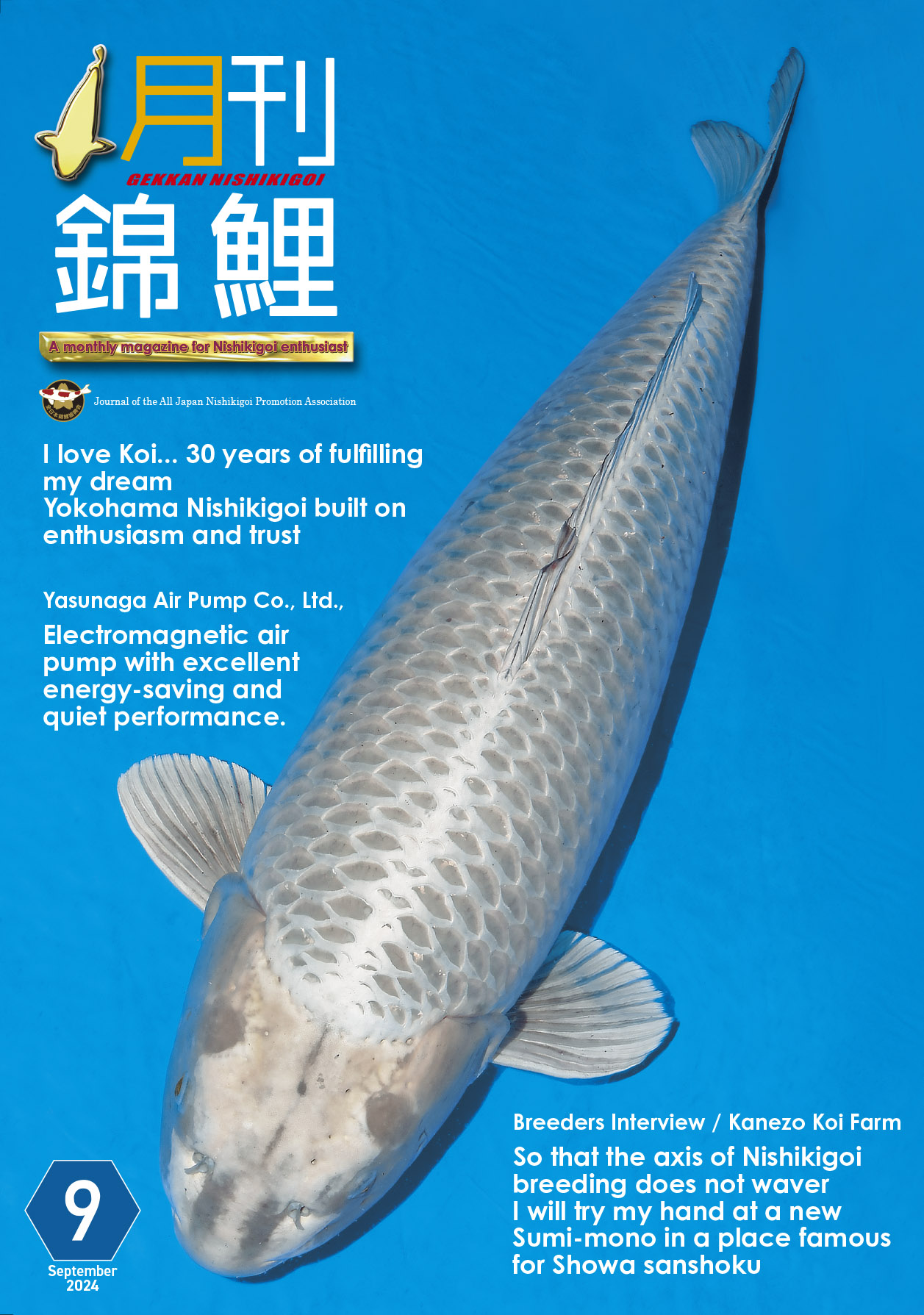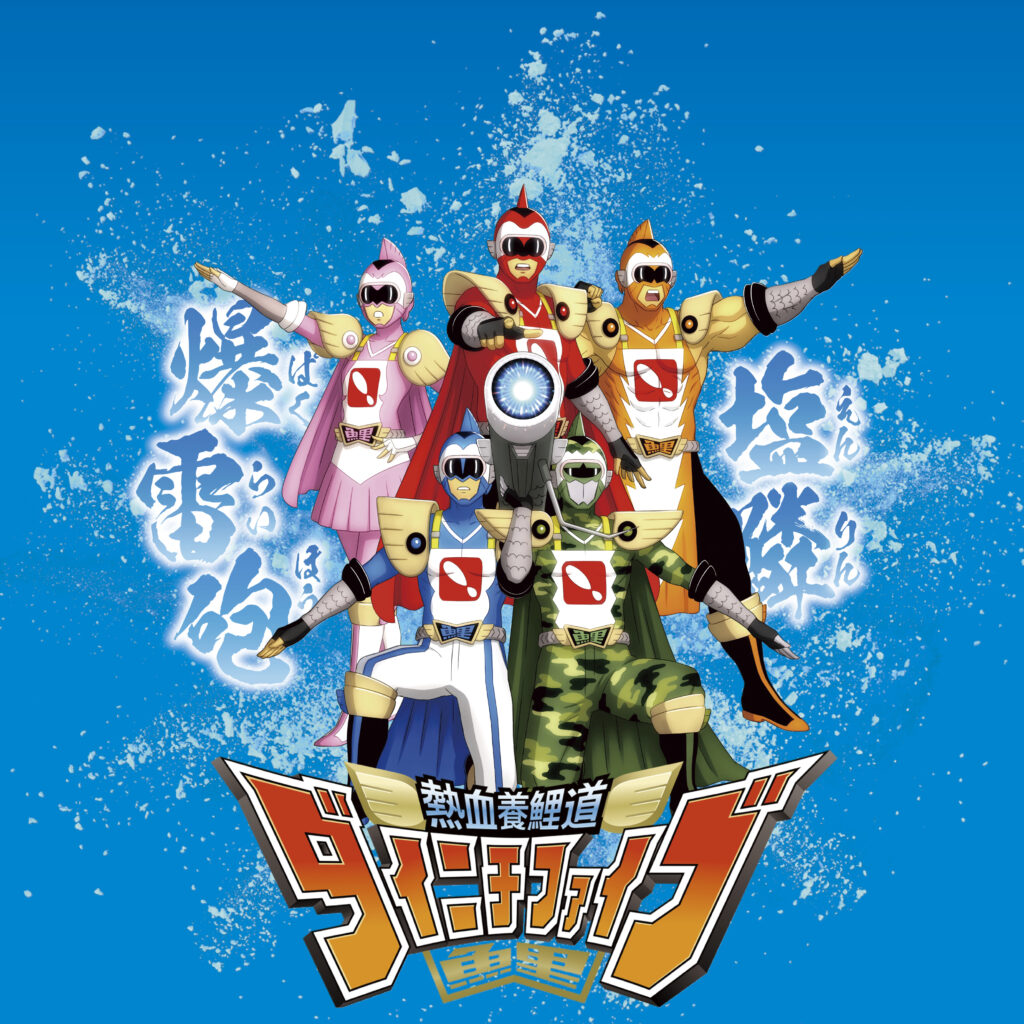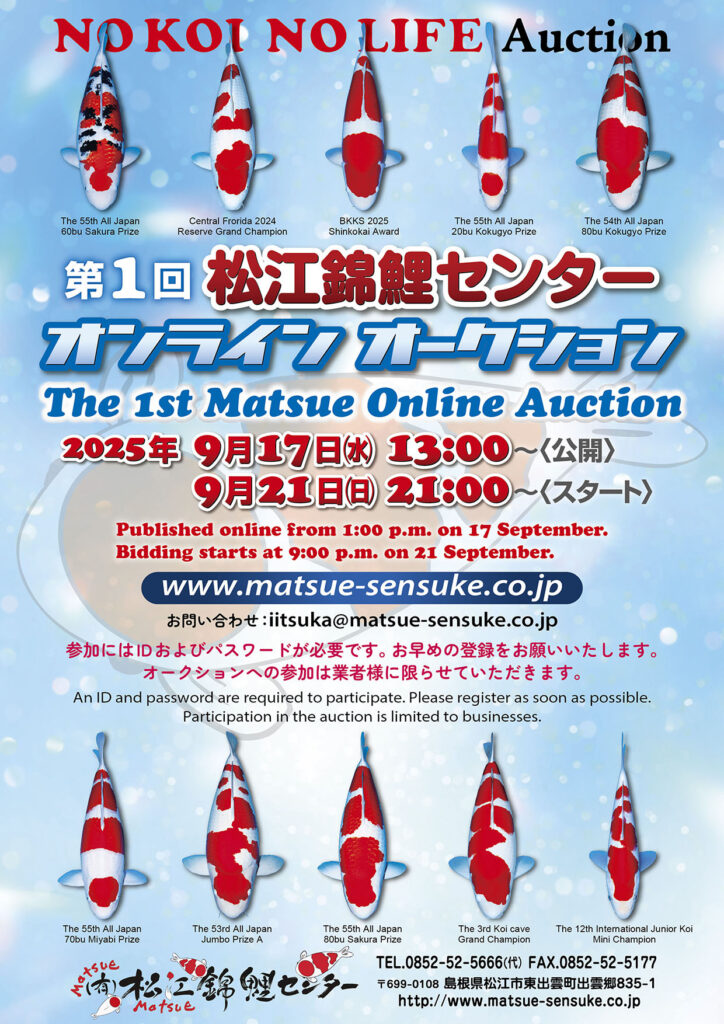Two main ponds and two pools
Putting various ideas into practice to do what I want
― Behind the house, there are two Jumbo Boxes, a round pool, and an INTEX pool lined up. First, could you tell me about the Jumbo Boxes?
Nozaki: When filled to MAX capacity, it holds about 1 ton of water. However, we don’t fill it completely, so the pond itself contains roughly 900 liters. Including the 100-liter filtration tank, the total comes to about 1 ton, which is how we’ve set it up.
― Regarding the pond, it has a tidy and unified appearance, but are there any particular aspects of the equipment or breeding methods that you take special care with?
Nozaki: First, we prioritize the overall visual appeal. We renovated the pond this past May. Before that, some materials were exposed, and the colors lacked cohesion, so we made adjustments like adding wooden frames around the containers and changing the covering nets to black—the same color as the tanks—to make the koi more visible.
― Indeed, the entire pond is covered with a net, but it makes it easier to see the koi.
Nozaki:Also, we used to have pumps submerged in the water, but every year the koi would bump into them, get scraped, or end up with injuries on their heads. So, we switched all the pumps to land-based ones and made sure nothing except aeration-related equipment is placed inside the tank.
As for the pump’s water intake, we originally had a drain plug on the junction box, so we attached a pipe there and ran a hose through it. This way, we can draw water from the bottom without having the intake directly inside the tank. Additionally, to prevent stagnant water, we’ve set up aeration in three spots inside the tank and one in the filtration chamber. The filtration chamber is also designed to drain from the bottom, which helps prevent debris buildup and makes maintenance easier.
― Could you explain the mechanism of that filtration tank?
Nozaki: First, in Tank 1, we have laid a brown mat to facilitate aeration and physical filtration, aiming to capture larger waste. If we placed the mat directly, the waste and filter media would stick together, which wouldn’t be ideal, so we’ve placed an anti-cat mat underneath to create a small gap.
In Tank 2, we use a regular mat with an anti-cat mat underneath and provide aeration. Finally, in Tank 3, the last tank, the water that flows down from Tank 2 is thoroughly circulated all the way to the bottom before returning to the pond. This is how the system is designed.
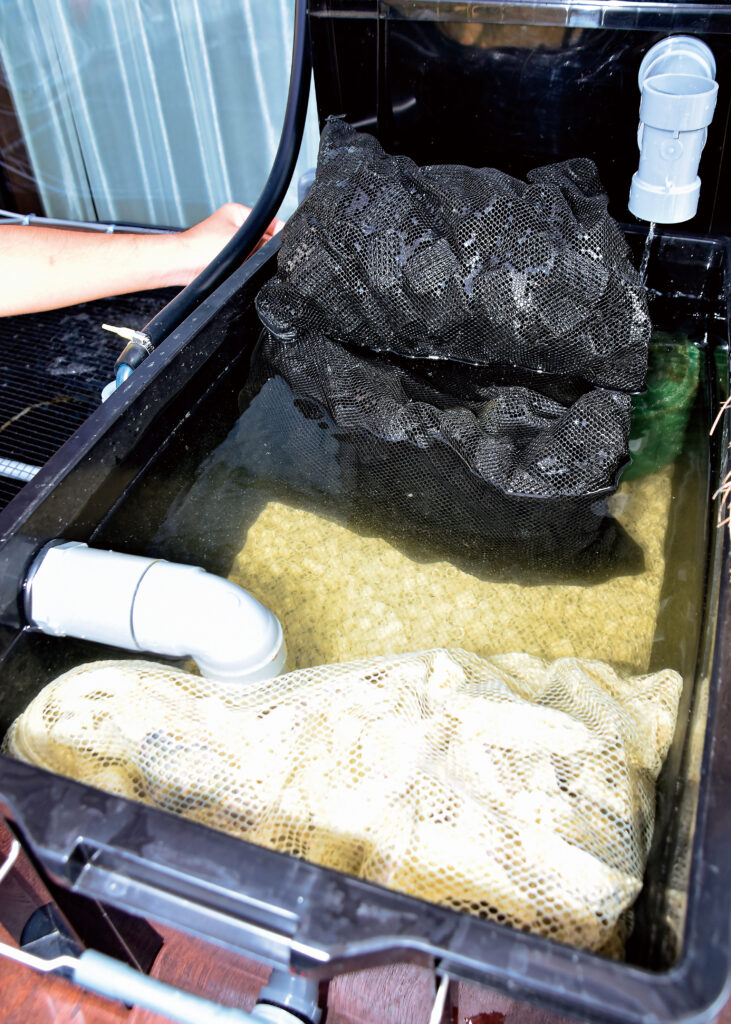
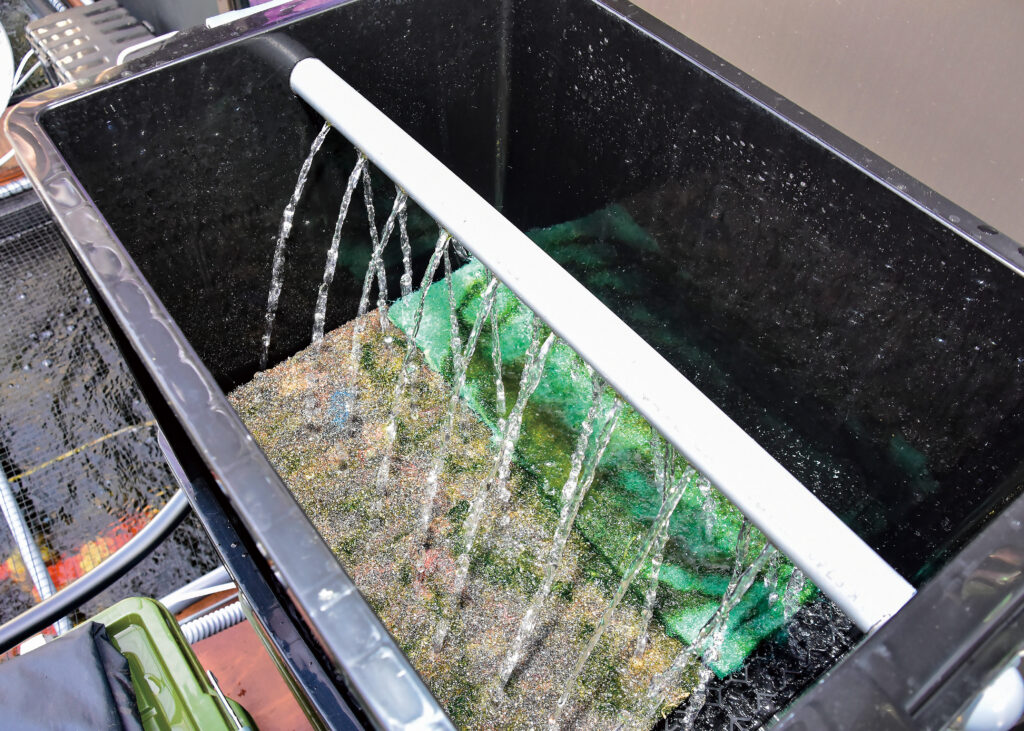
A cat deterrent is placed under the brown mat to create gaps
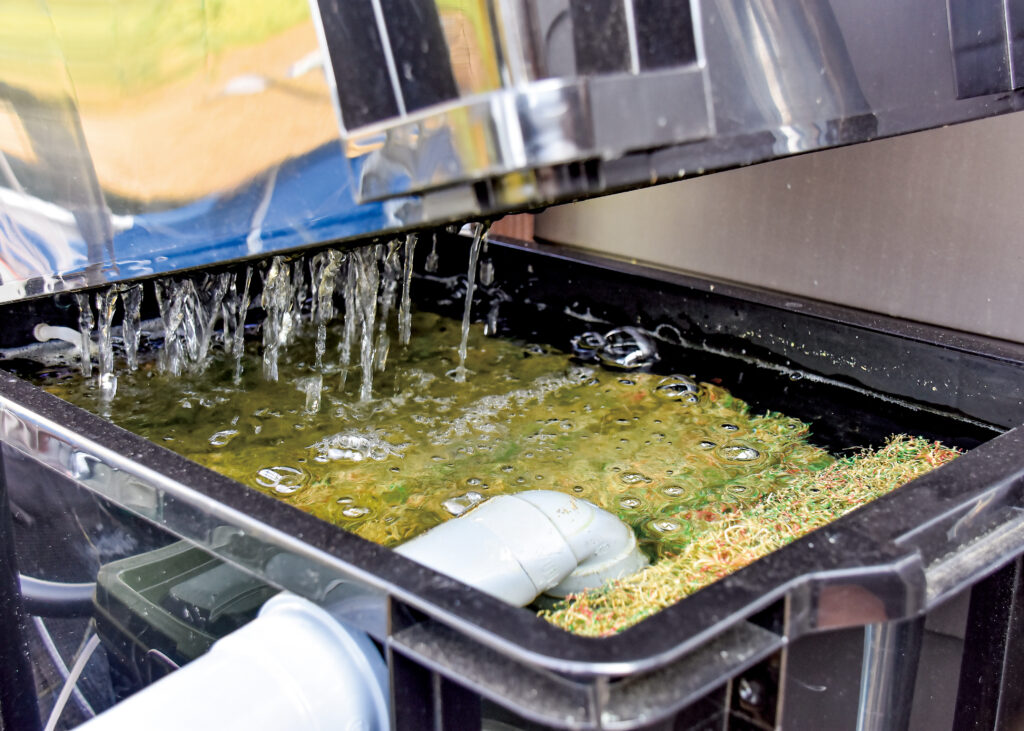
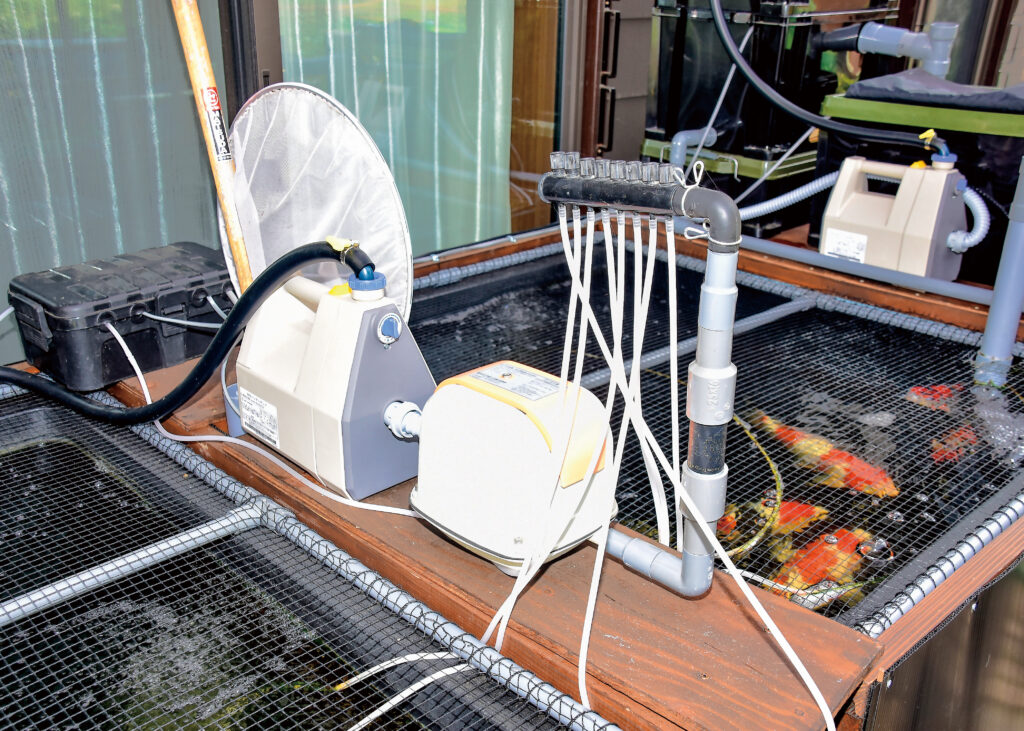
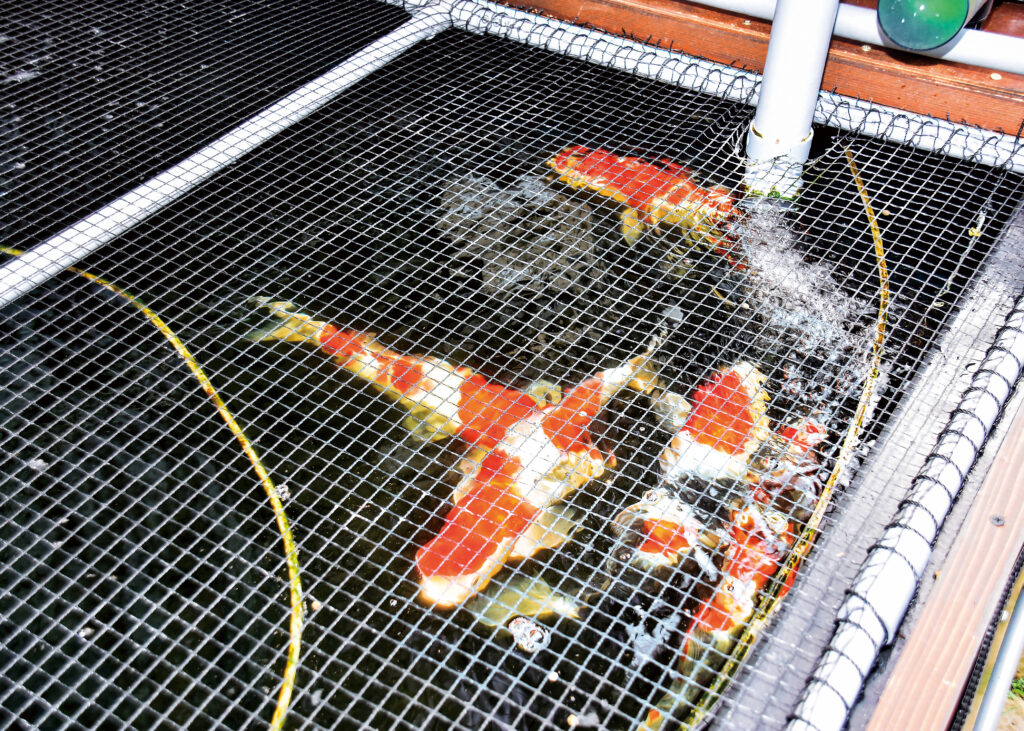
― What is the box placed under the second slot?
Nozaki: This is only placed here to adjust the height between the second and third slots.
― Slot 3 contains various types of filter media, doesn’t it?
Nozaki: This is primarily a biological filtration tank, designed to allow bacteria to colonize. We’ve spread oyster shells and ring filter media across the entire surface, and we’ve also added bio-sponges and bio-mesh. We pay close attention to water flow to prevent any stagnation in the filtration tank. I researched on my own, observed the equipment at Koiwa-san’s place, and tried to replicate what I could. For things I could make myself, I did.
― Regarding the filtration tank for the round pool, is it roughly the same?
Nozaki: The oyster shells and bio sponge are the same, but we also use pumice stones and anti-theft gravel. Additionally, when piping, we cut leftover PVC pipes into small pieces and use them as a substitute for ring filter media.
― I see. So, you’re effectively utilizing things that would otherwise be thrown away. Mr. Nozaki, do you prefer raising them to stay small and neat, or do you aim for larger growth?
Nozaki: Since there are limits to the equipment even if they grow bigger, I think stopping at around 50–60 cm would be ideal. At that size, they still have a strong presence as koi. The ones I have now still need to grow about 10 cm more, so I’m looking forward to seeing how much they’ll grow by autumn.
― So, how do you differentiate the use of the Jumbo Box and the Round Pool?
Nozaki: The Jumbo Box has a roof, and the Round Pool doesn’t. Because of that, I don’t like putting the Gosanke in the Round Pool, as their red patterns might fade in the rain. The round pond primarily houses koi varieties with stable, non-spreading red patterns, those with no red markings, and the main and backup koi that don’t fit into the jumbo tanks.
― The main koi are in the jumbo tank.
Nozaki: In the left of the two tanks, I have Takahashi-san’s Sanshoku and five carefully selected Kijiro that I received as a reader gift from the magazine “Monthly Nishikigoi.” The right tank has six Showa and Kohaku that I bought from a breeder in Niigata. Originally, I thought about putting in around ten, but when I consulted Takahashi-san, he said, “With this water volume, five is the maximum.”
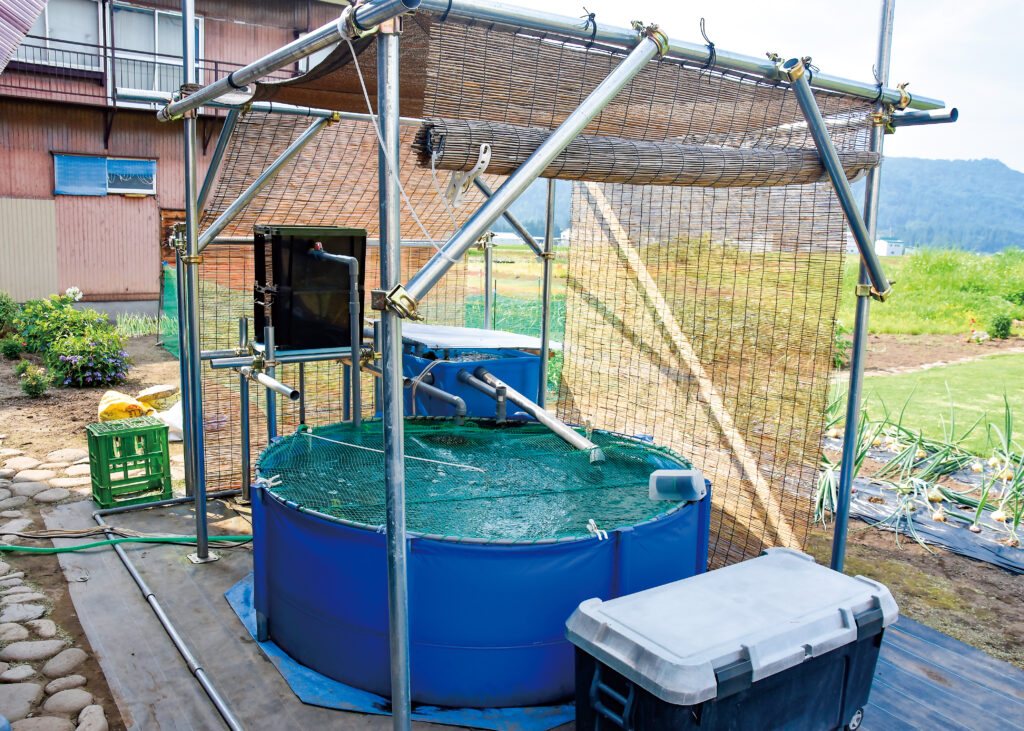

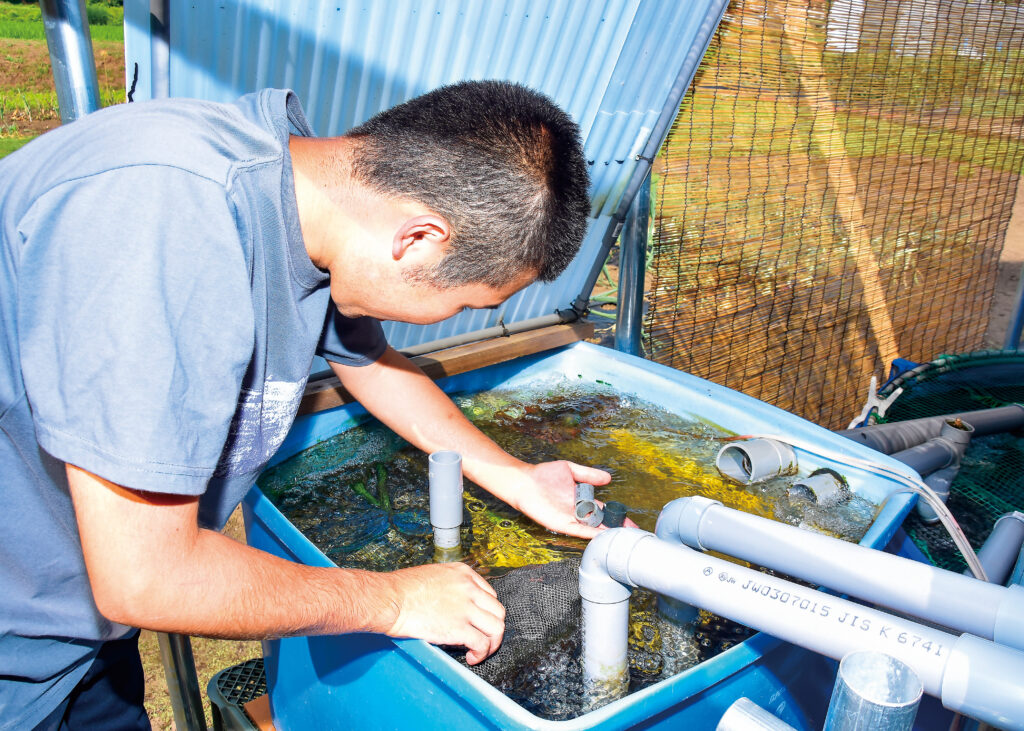

(To be continued in the part 2.)

